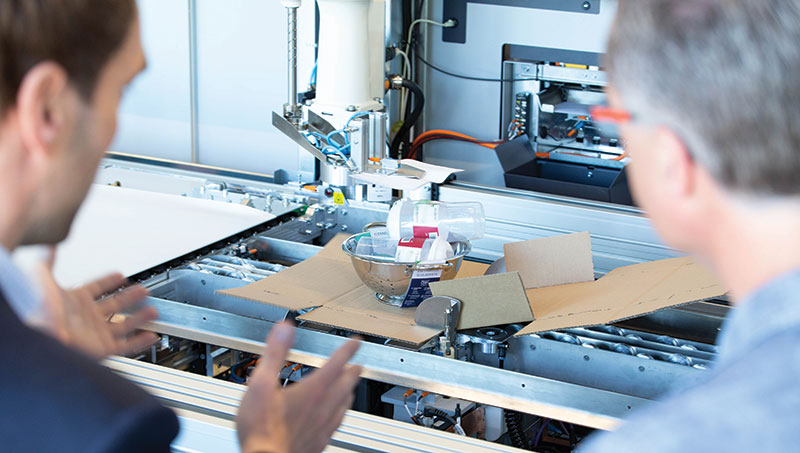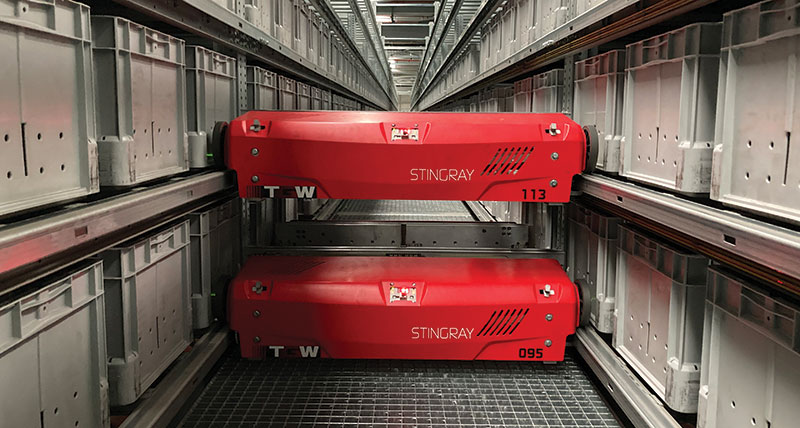Supply chain sustainability is here to stay
The supply chain is undoubtedly getting greener thanks to corporate commitment and the right technology.
When the pandemic hit in March 2020, many companies had to scramble to keep operations in motion. Employees were sick or wanted to stay home if possible, manufacturing stalled in many places, and at the same time, consumers turned to e-commerce for anything and everything. It was a perfect time for companies to let their goals for sustainable supply chains slide.
Yet, despite all the challenges, the 2021 “State of Supply Chain Sustainability” report, put together by the MIT Center for Transportation & Logistics and the Council of Supply Chain Management Professionals (CSCMP), found that most companies kept their eyes on the ball with regard to sustainability.
The survey results indicated that, even during the toughest lockdowns, 80% of respondents didn’t change course with their sustainability goals. Some 83% of executives went so far as to say that the pandemic either accelerated sustainability activity, or at the very least, increased their awareness of it.
What’s driving this focus? Numerous factors.
Nathan Wolf, vice president of sales at TGW Logistics, says the company’s efforts are both customer-driven and corporate-responsibility driven. “Because sustainability is becoming such an important topic for our customers, we want to support their goals to earn the honor of being their partner of choice for warehouse automation,” he says. “It’s hard to deny that, to some extent, customers are spurring us forward in sustainability.”
Wolf adds that the logistics industry is placing increasing emphasis on sustainability goals. “We’re seeing that sustainability is becoming more and more of a priority,” he says. “Businesses are very concerned with maintaining viability, and so they’re looking for future-proof solutions for their warehouses.”
TGW has its own sustainability goals, according to Wolf. “There’s already a natural alignment to our values and our foundation-owner’s philosophy,’” he says. “We believe taking good care of the ecological impacts and social aspects of our business allows us to be successful, while contributing to the creation of a better world. Our value system pushes us to think about the long-term orientation and the sustainable development of TGW and its customers.”

The efforts surrounding sustainability in the supply chain run across a spectrum, and the “State of Supply Chain Sustainability” report went so far this year as to add a classification system of the involved companies based on their behaviors related to sustainability.
The range went from low-effort enterprises with little engagement to highly committed leaders. Sustainable outcomes, according to the report, hinged on this level of engagement.
Data from the report also revealed that, like TGW, much of the drive for sustainability originated within the company itself. Only 8% of respondents said pressure from investors grew over the past year. Yet 59% said they had invested in supply chain sustainability over the same period.
This is a far cry from just five to 10 years ago, when most companies first got involved to achieve growth goals and improve market perception, according to the findings of the “2022 Sustainability Report,” which digital manufacturer Protolabs commissioned.
Sustainability efforts, it appears, now extend beyond lip service.

Figuring it out
While it’s good news for the planet that companies are starting to take sustainability beyond small talk, figuring out exactly how to go about that can still be a challenge. Sean Elliott, chief technology officer at Körber Supply Chain, says he has two conversations with customers these days surrounding sustainability.
“We see them taking meaningful steps forward, and not just virtue signaling,” Elliott says. “But while this is now a known space to have an impact, there are many unknowns on how to go about it.”
Sean Webb, director of automated packaging at Sparck Technologies, is seeing similar from his customer base. “Customers are demanding it from the businesses they buy from,” he says, “so many companies are looking at the issue and trying to solve it.”
One constant worry is the price of sustainability, which sometimes can make it a tough sell. “It’s expensive, which is a struggle,” says Webb. “I was at a conference recently where major corporations expressed that, while they want to make sustainable improvements, they’re trying to figure out how do it efficiently.”
This lines up with some of the findings in Protolabs’ “Sustainability Report.” While sustainability is growing in importance across the automotive, aerospace and medical industries, many of these initiatives were either in development or early adoption phases, Bernie Henderson, director of procurement at Protolabs, says. “For example, less than a third of respondents reported having sustainability-related KPIs in place,” he says.
Körber says that for many companies, the place to begin is with the low-hanging fruit. “It’s rare that these businesses don’t have a sustainability initiative,” Elliott says. “Most of them have it. But most are still going after the easier, established ways to grow a greener supply chain.”
These include “scope one” steps, like employing sustainable packaging methods—proven methods for having an impact. This is where a company like Sparck comes into play. The automated packaging company specializes in “right-sized” packaging. “People aren’t happy when they receive a big box full of packaging materials,” says Webb. “If you have a better-fitting box, you can reduce or eliminate the fill that’s needed.”
This was the case with Sparck customer Internet Fusion Group, a U.K.-based online outdoors lifestyle brand. Looking to become a leader in sustainable packaging approaches, Internet Fusion turned to Sparck for solutions. The partners implemented two Sparck automated packaging machines, each of which can typically replace eight to 16 packing stations.
The company calculated that the investment would offer a reduction of 92 truck loads per year due to the space savings it achieved. Additionally, the retailer was able to make 91% of the packaging it does use plastic free, reducing void-fillers and fiberboard, and freeing labor resources for other tasks.
Webb says that in Europe, this is an easier sell than in the United States, but that if you can prove the ROI, U.S. customers come around, too. “Companies in Europe come looking for sustainability gains specifically,” he says, “but in the United States, you have to demonstrate the pay back. But that’s changing—U.S. customers are paying attention and understanding now, too.”
At Körber these days, some 80% of conversations will contain some element of sustainability, says Elliott. “About a third of our clients are looking beyond the first steps and into how software can assist them with a multi-year approach,” he says. “They want to know what areas can offer up the most material impact.”
Automation is a key factor in this equation. “For many, that includes adding sustainable, automated materials handling systems to their facilities,” says Wolf. “It’s becoming such a high priority that some customers of ours are even requesting specific or structured documentation around the sustainability of our technologies.”
TGW provides several materials handling systems that it markets for their green approach. These include the company’s KingDrive conveyors, which use gearless motorized rollers and an intelligent system for energy recovery; its Stingray Shuttles, which use an energy recovery system originating with the braking system; and its PackChain Reduce, which focuses on reducing material waste in packaging.
Sustainability efforts extend beyond the warehouse, too, and into manufacturing techniques, which is where digital technology can play an integral role. According to Protolab’s Henderson, digital manufacturing draws on “fourth industrial revolution” technologies like AI-powered digital twin processes.
“Digital manufacturing is now able to serve as a plug-and-play solution within a company’s supply chain, bringing a digital approach to a more comprehensive manufacturing offering,” Henderson says.

Challenges going forward
Despite all the progress companies are making with sustainability, challenges still need to be overcome moving forward. “Visibility and measurement are the toughest challenges,” says Elliott. “With transportation, it’s easy to measure the carbon footprint impact. With warehousing, it’s a tougher model.”
Körber works with its customers to help make the case for investments in sustainable practices. “We might work to measure the carbon footprint of an ambient operation in New Jersey, for instance,” Elliott explains. “Even with an approximation model, they can start to see their contribution to sustainability. Once they can measure it and understand it, then they can improve.”
To that end, Körber promotes simulation as a linch-pin technology. “Simulation is a bridge,” Elliott explains. “It enables companies to safely think through their next steps.”
The “State of Supply Chain Sustainability Report” predicts greater investments in sustainability in the future. But along with that comes scrutiny, says the report, and with scrutiny comes responsibility.
“If the pressure from investors and regulators does indeed put companies’ supply chain sustainability practices under a microscope,” reads the report, “this will in turn require more enterprises to increase transparency and disclosure of practices and activities in their supply chains.”
True supply chain sustainability will require a holistic approach, one that includes changes in operations, investments in software and automation, a focus on materials, and most of all, a belief in the value it provides.
In many ways, sustainability is a movement just getting started; but if companies can keep it a priority during a pandemic, there’s no telling what the future may hold.













